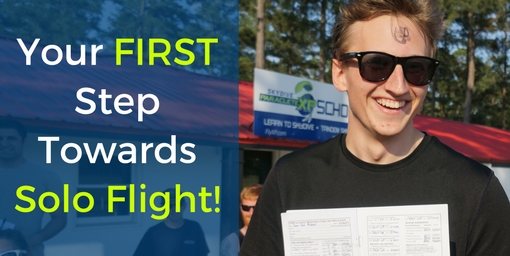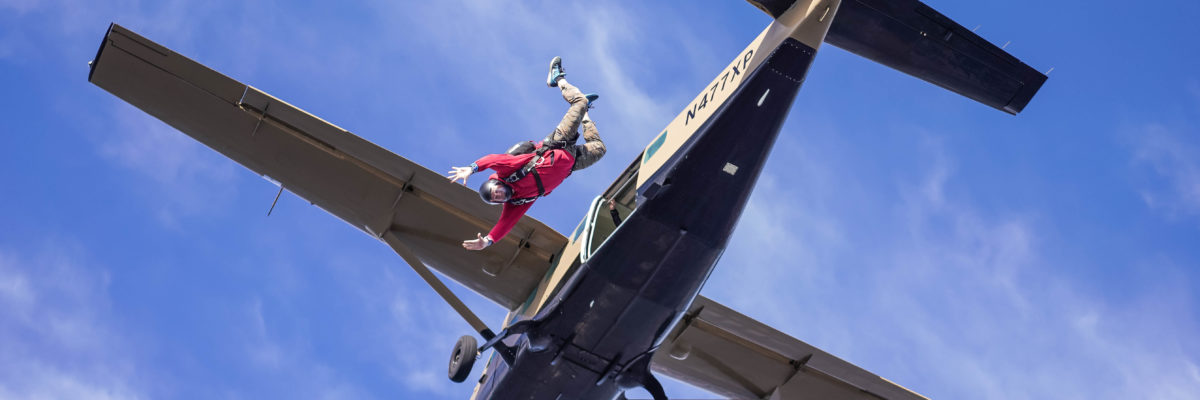
Learning To Skydive – Everything You Ever Wanted To Know
Tuesday, February 26, 2019
- Team FlyXP
- 2/26/19
- 0
- General
To skydive or not to skydive, that is the question! Society will tell you that you’re completely nuts for even thinking about it! After all – isn’t learning to skydive associated with people going through an existential crisis? If you’ve ever visited a dropzone, you’ll find this isn’t exactly the case. There’s a lot of people who take up skydiving who are perfectly normal who work your average 9 to 5.
This article is designed to serve as a true behind the scenes look of what you need to know about learning to skydive.
Tandem Skydiving – The Gateway to Learning How to Skydive
Chances are if you’ve made a tandem skydive, your imagination has opened up to the idea of wanting to experience more of what you felt during your first tandem jump that rocked your world! The feelings of adrenaline, anticipation, excitement, freedom, peace, and happiness all wrapped into one event is addictive, and yes, you can do more of it! People who skydive regularly are not immortal! They all started exactly where you did with jump number one.
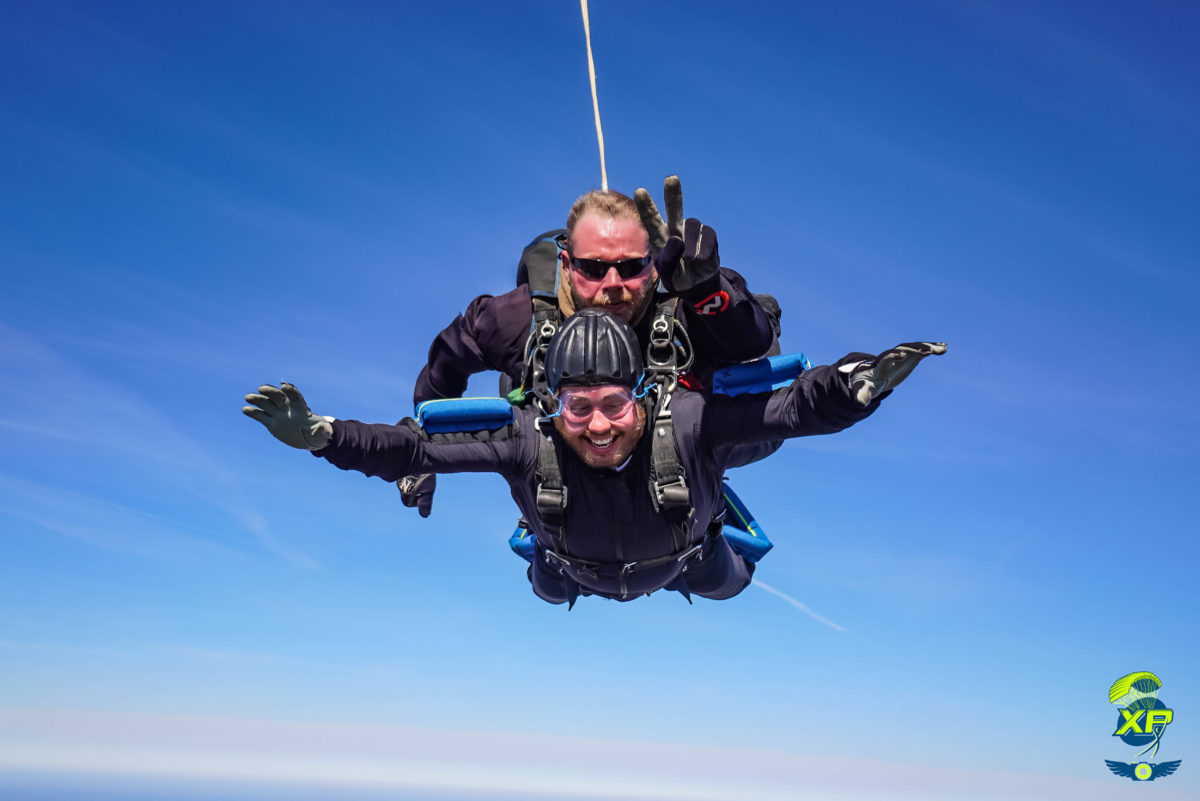
If you’re interested in skydiving or learning to skydive, making a tandem skydive is a great entry point to the sport as it will give you a taste of whether you’ll like the activity or not. It is not a requirement to make a tandem skydive first, but it is highly recommended.
If you’ve made a tandem skydive already or are a person who knows in their heart and soul that skydiving is their destiny, then there’s a term you’ll want to familiarize yourself with and it’s known as AFF (Accelerated Free Fall).
What is Accelerated Free Fall (AFF)?
Accelerated Free Fall (AFF) is the most common skydiving method used in civilian skydiving throughout the world. Often referred to as ‘AFF’, this method of training allows a skydiving candidate to experience free fall from the very first jump. AFF is comprised of seven skydives that are progressive – with each jump, you learn a new skill. Once a skydiving student graduates from AFF, they are cleared for self-supervision.
To be self-supervised means that you are now proficient to skydive by yourself! You can get on an airplane, exit, free fall and land without the help of an instructor, but you’ll quickly learn that skydiving by yourself can get a little old. The fun is jumping with others and to do that, you’ll need to attain your A-license which requires a minimum of 25 jumps (this includes any tandems you’ve made and your AFF training).
Paraclete Student Program (PSP)
Skydive Paraclete XP offers an AFF program, but you could say we’ve taken the training to another level! Our student program is based on the AFF training method, but we’ve put it on steroids! Because Skydive Paraclete XP has its own wind tunnel (the largest in the United States), we have incorporated this incredible tool to strengthen the confidence and skills of our students. The worlds best civilian competition teams and military special force units train in this tunnel to improve their skills – we believe our students should have that same access!
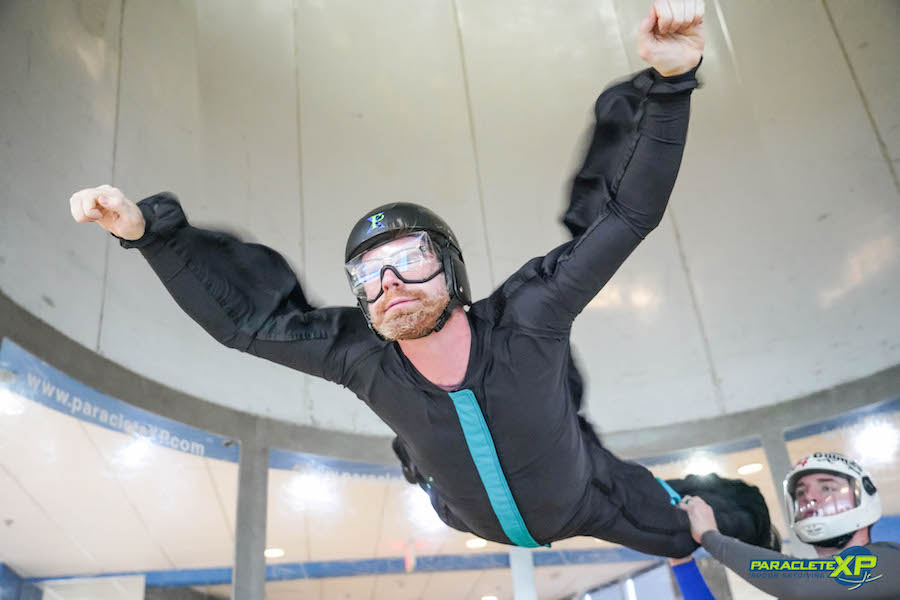
With humility, you could say that our learn to skydive training program is the equivalent of going to an Ivy League university as our instructors and tools are some of the best in the skydiving world.
Learning To Skydive FAQs
In this section, we’re going to address the most common questions we receive about learning to skydive from the activity itself to the questions that your spouse or parents are going to want to know as you begin this crazy “phase” you’re going through!
How dangerous is learning to skydive?
Statistically speaking, learning to skydive has never been safer than it is today due to better equipment, better instructor training and the introduction of indoor skydiving which rapidly increases the learning curve. Is learning to skydive free from risk? No. You can be killed doing this activity. (We don’t want to sugarcoat this).
Is learning to skydive hard?
Learning to skydive is not difficult, but it can vary from participant to participant. Age, flexibility, fitness and hand-eye coordination are variables that factor into an individuals performance when learning to skydive. The introduction of indoor skydiving (wind tunnel training) has greatly helped those that have felt challenged to quickly adopt the necessary body position for stable free fall.
How often must I jump when learning to skydive?
If your goal is to become a skydiver, you’ll need time (usually on the weekends) and some patience (weather will be an issue throughout your training). In order to stay “current”, you’ll need to make a jump once every 30 days. Failure to jump within this time period will require skydiving students to repeat the last successfully completed level during their training.
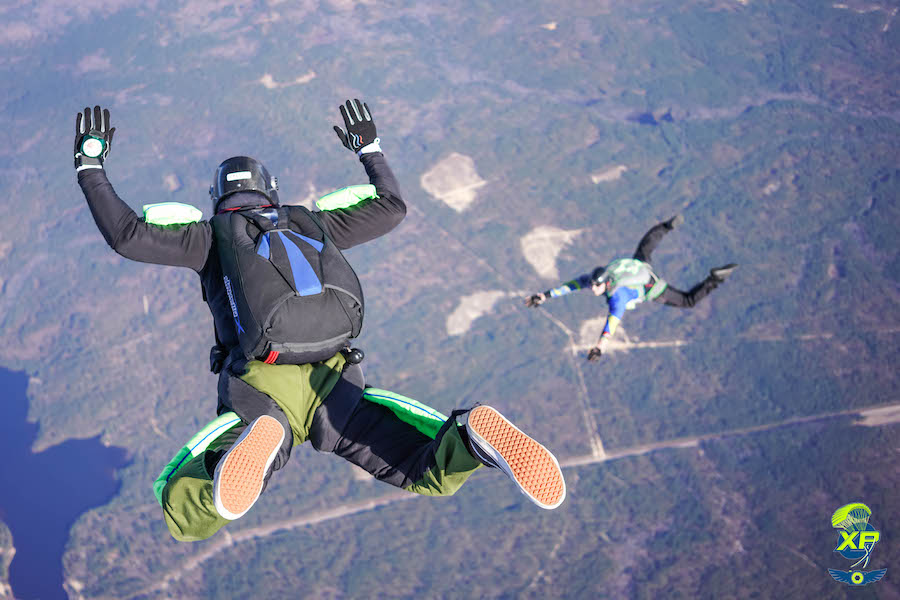
How much does learning to skydive cost?
The costs associated with learning to skydive will vary from one dropzone to another. Some training programs are only seven jumps while others, like the Paraclete Student Program, is more comprehensive and involves 18 jumps. Depending on the program, the price for training usually varies between $1500 and $3000 US dollars.
Do I need to purchase any equipment when learning to skydive?
It’s standard at most skydiving operations that all equipment be provided to the student throughout their training. This equipment includes a helmet, goggles, altimeter, jumpsuit, and the parachute system. Some students can opt to buy their own goggles and an altimeter for their own use throughout their training if they prefer.
How quickly can I fly in a wingsuit after learning to skydive?
Flying in a wingsuit has attracted many people to the sport as the visuals and feeling of true flight is remarkable – however, your journey to flying in a wingsuit isn’t rapid. Skydivers wishing to fly in a wingsuit must accumulate a minimum of 200 jumps (verified with a logbook), have a USPA C-license and have participated in a First Flight Course.
Flying in a wingsuit presents more risk and requires a high level of proficiency which can only be built from experience.
What Is Static Line Skydiving?
Prior to the 90s, the most common learning method was static line. Static line is still used today, but is not as prevalent to AFF because it doesn’t involve free fall (the part everyone loves). A static line is attached to a skydiving student’s parachute and the plane. When the student exits the aircraft, the parachute is deployed immediately.
Learning to skydive is one of the most fun and exciting adventures and it’s progressed a long way from the scary barnstorming days of Fandango (if you learn to skydive, watching this movie is a rite of passage).
Should you have any questions, feel free to call us. If you know you’re ready to begin your journey, click here to schedule your first jump course!
Copyright © 2024, Skydive Paraclete XP, All Rights Reserved.
DropZone Web Design & Marketing by Beyond Marketing, LLC
